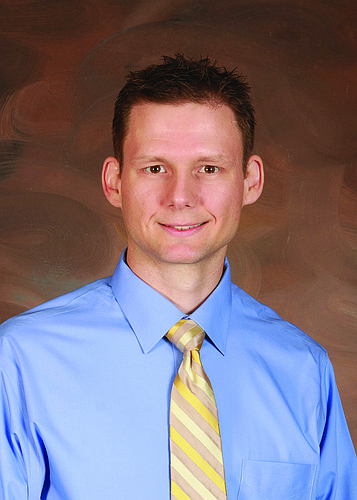- April 18, 2024
-
-
Loading

Loading

Every October, organizations, businesses and other entities put on pink and raise money — all in the name of Breast Cancer Awareness Month.
The monthlong event has become a part of American culture and helps bring awareness to one of the most common forms of cancer that women — one in eight, to be precise — in the United States will face.
It’s also a time to shine a light on something that rarely gets discussed: Breast cancer in men. Although most relate the diagnosis to women, it also is a concern for men, said Dr. Regan Rostorfer — a breast cancer specialist at the Orlando Health UF Health Cancer Center.
“It is significantly less common, but it is not unheard of,” Rostorfer said. “I cannot remember the most recent stats off the top of my head, but there is something like 240,000 to 250,000 breast cancer diagnoses, and the far bulk of those are women. Male breast cancer is 1/100 of that of women’s breast cancer, so female breast cancers are about 100 times more common.”
Rostorfer — board-certified in medical oncology, hematology and internal medicine — has worked with a small handful of men who have battled breast cancer. Although many would think the disease would be different between women and men, it actually isn’t, Rostorfer said.
One of the main reasons why breast cancer is so much rarer in men is that men have less breast tissue.
That men have breast tissue at all is often one of the most shocking things for those who enter Rostorfer’s office.
“Men do have breast tissue — much to their surprise sometimes — but men also don’t have the same hormonal stimulation,” Rostorfer said. “(Men) aren’t exposed to the same level or type of hormones throughout life. There is clearly some correlation between the types of hormones and the length of time you’re stimulated by certain hormones.”
Although men aren’t exposed to the same hormones in that manner, there are other variables that factor into breast cancer. With more information collected on the disease, there is evidence that supports the idea that some people have a genetic disposition to breast cancer. Some men inherit abnormal genes — specifically mutations to the BRCA1 and BRCA2 genes — that put them at higher risks of developing breast cancer and other cancers.
“If we ever have a male patient dealing with breast cancer, one of the standard recommendations — if you follow any of the cancer guidelines — is to test that man for a genetic mutation to see if he carries a BRCA mutation or some other type of risk factor,” Rostorfer said.
Often, when Rostorfer is working with women dealing with breast cancer, there is the fear of passing it down to their daughters. The chances are 50/50 that it could be passed down, Rostorfer said, but the disease also can be passed down to their sons — a possibility many women do not realize at first.
Along with genetics, family history — an obvious factor — and obesity also affect the likelihood of developing breast cancer, Rostorfer said.
One of the hardest parts about diagnosing breast cancer in men is that there are no regular screenings for men.
Although women are encouraged to have annual mammograms, the only “screening” for men is a regular physical examination.
“If you kind of look at all men versus all women with breast cancer, men are a little bit more likely to present with a more advanced stage of cancer compared to women, and that’s because we don’t have screening processes for men,” Rostorfer said. “A lot of men can be kind of embarrassed by this, or they think it’s not possibly cancer. Based on those things, they don’t get a quick diagnosis.”
There are a few symptoms that occur in men with breast cancer; the most obvious is a lump found in the breast. Other symptoms include an inverted nipple, skin changes of the breast or even an enlarged lymph node.
In the case that any of those symptoms occur, Rostorfer said, the best option is to have a mammogram and ultrasound done. If the doctor thinks it’s problematic, a needle biopsy will be performed.
“If we see that it’s cancer, there are a lot more questions that come up,” Rostorfer said. “We look at different types of hormonal markers — (such as) estrogen receptor and then a different protein marker called HER2 — and then depending on which of those is positive or negative, it could make a very different treatment plan for the cancer.”
Treatment options for men range based on the individual and often include using surgery, radiation, chemotherapy, hormone manipulation or a combination to battle the cancer. Surprisingly, the types of breast cancers and the treatment options are almost the exact same between men and women — though there are a few exceptions, Rostorfer said.
Although there are many ways for both men and women to prevent or treat breast cancer, the best advice that Rostorfer offers is early detection.
“It’s amazing to me how many people do not have doctors or who have not seen their primary care doctor in four years,” Rostorfer said. “If you don’t have anything major, a lot of people don’t go for that routine checkup, but having a doctor is really important.”